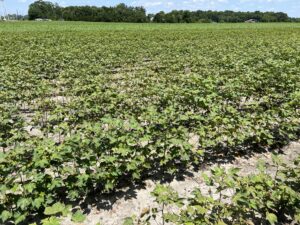Early and Mid-Season Insecticide Recommendations for Tarnished Plant Bug
go.ncsu.edu/readext?945484
en Español / em Português
El inglés es el idioma de control de esta página. En la medida en que haya algún conflicto entre la traducción al inglés y la traducción, el inglés prevalece.
Al hacer clic en el enlace de traducción se activa un servicio de traducción gratuito para convertir la página al español. Al igual que con cualquier traducción por Internet, la conversión no es sensible al contexto y puede que no traduzca el texto en su significado original. NC State Extension no garantiza la exactitud del texto traducido. Por favor, tenga en cuenta que algunas aplicaciones y/o servicios pueden no funcionar como se espera cuando se traducen.
Português
Inglês é o idioma de controle desta página. Na medida que haja algum conflito entre o texto original em Inglês e a tradução, o Inglês prevalece.
Ao clicar no link de tradução, um serviço gratuito de tradução será ativado para converter a página para o Português. Como em qualquer tradução pela internet, a conversão não é sensivel ao contexto e pode não ocorrer a tradução para o significado orginal. O serviço de Extensão da Carolina do Norte (NC State Extension) não garante a exatidão do texto traduzido. Por favor, observe que algumas funções ou serviços podem não funcionar como esperado após a tradução.
English
English is the controlling language of this page. To the extent there is any conflict between the English text and the translation, English controls.
Clicking on the translation link activates a free translation service to convert the page to Spanish. As with any Internet translation, the conversion is not context-sensitive and may not translate the text to its original meaning. NC State Extension does not guarantee the accuracy of the translated text. Please note that some applications and/or services may not function as expected when translated.
Collapse ▲We recently published a holistic article to plan for tarnished plant bug in 2023. Since then, we have received a lot of questions about what to use at this point in the season as folks are making passes over the field with herbicides and growth regulators.
First off, follow our threshold recommendations. Even if you can piggy back an insecticide, spraying at sub-threshold levels is throwing money down the drain. Prior to bloom, this threshold is >80% square retention AND eight plant bugs in 100 sweeps. In most situations, yield will not be gained retaining squares above the 80% level. Be sure to switch to using a drop cloth (for these reasons) when cotton blooms and only spray if levels reach 2-3 plant bugs per drop cloth sample. Keep in mind that all cotton, including ThryvOn, should be scouted and treated for tarnished plant bugs if the threshold is exceeded.

Field infested by spider mites following Orthene application (July 12, 2023). Orthene kills beneficial insects and can actually cause female spider mites to lay more eggs.
At this point in the season (July), growers should use Transform at 2 – 2.25oz, following our regional insecticide recommendations that change across the growing season. Transform will preserve beneficial insects that can provide bioresidual, to hold back more plants bugs, stink bugs, bollworms, spider mites and aphids. We have already seen spider mites at treatable levels across the Coastal Plain. Spider mites are worse in hot and dry conditions, but are also flared by acephate (Orthene). Try not to use this insecticide until later in the season. Do not use Diamond until nymphs are present and multiple sprays are expected.
Finally, neonicotinoic (Admire Pro, Belay, Centric) efficacy tends to wane throughout the season. Sprayed alone, these insecticides are generally less effective than Transform and have inconsistent efficacy. They can be used as tank mix partners, however.


